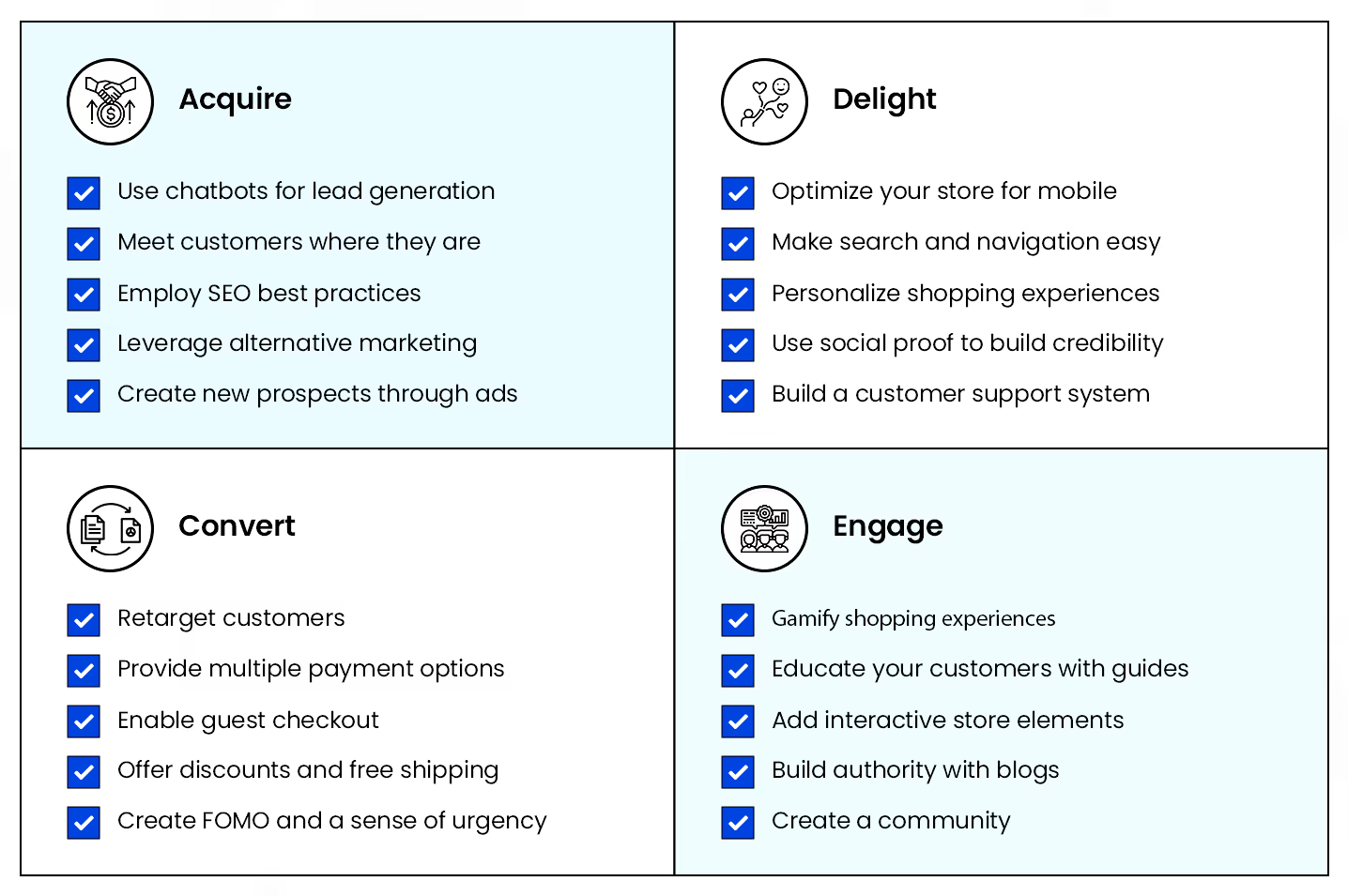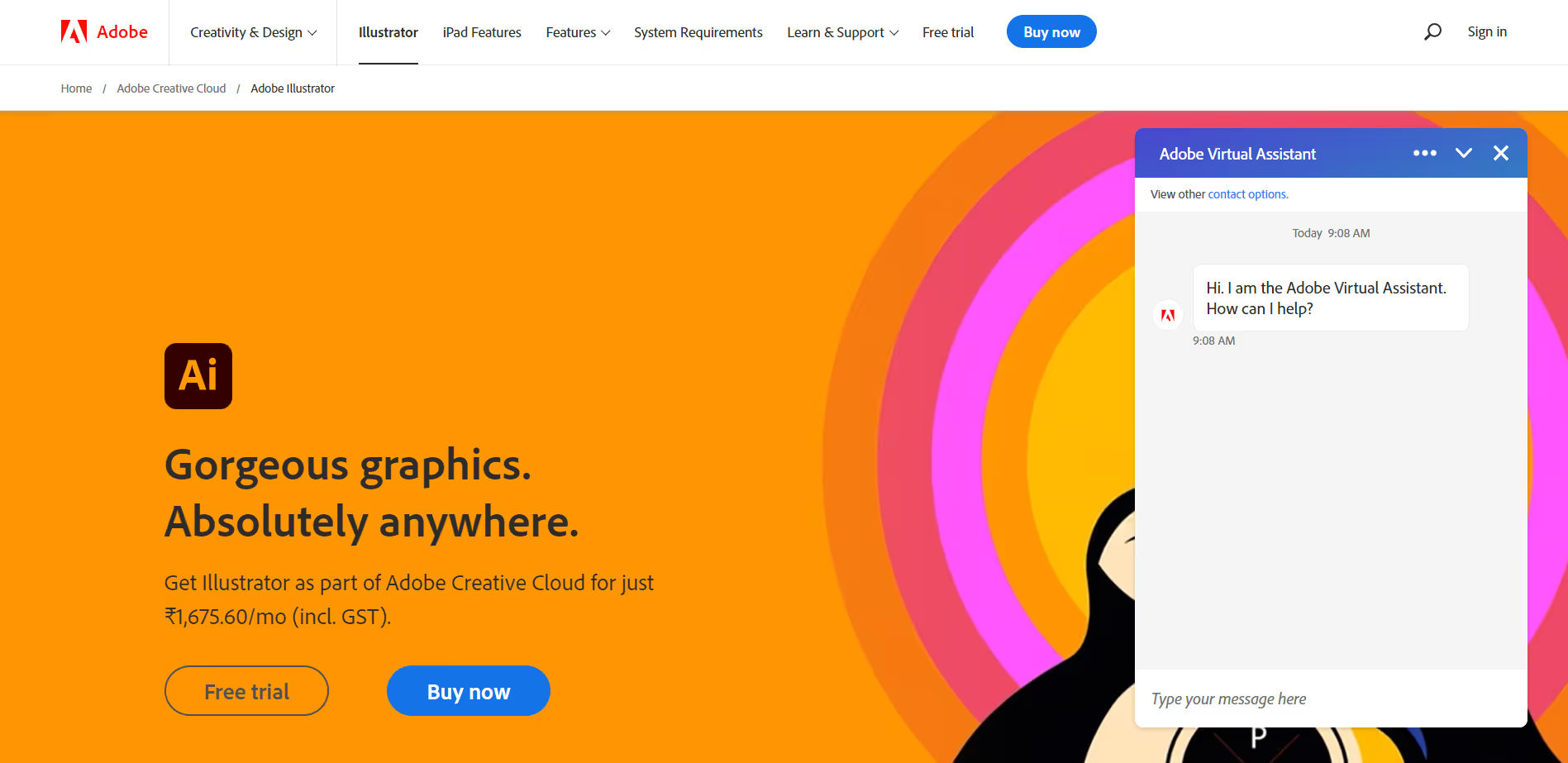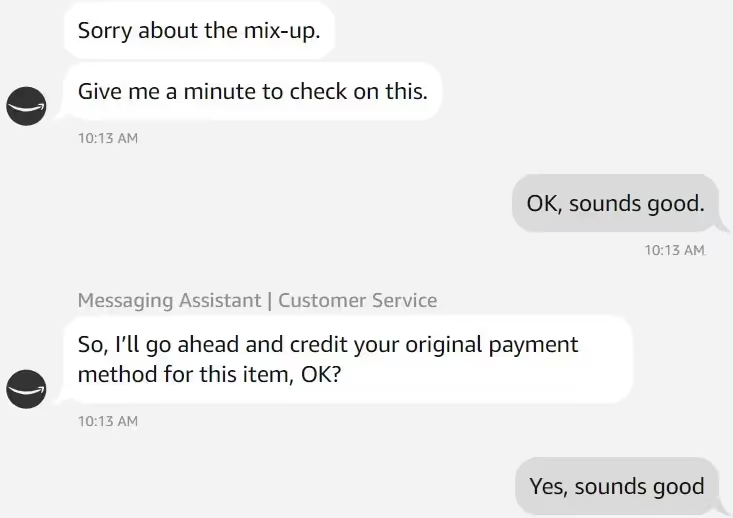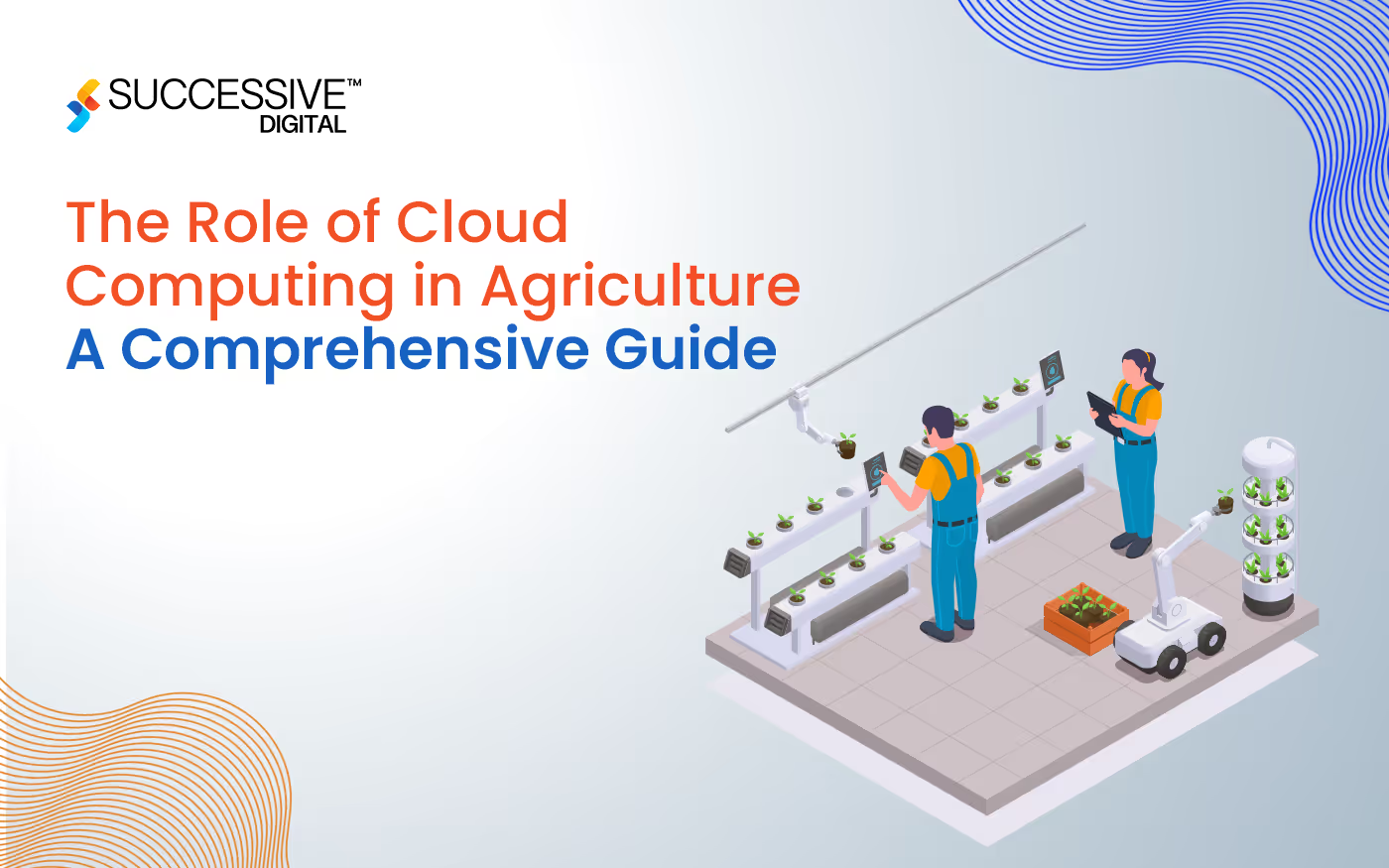The purpose of every enterprise is to grow revenue and profits. Every business function is aligned to achieve this fundamental purpose.
Businesses have begun to create roles exclusively focused on fulfilling this purpose in recent years. Professionals filling these roles are called ‘Growth Managers.’ A more interesting derivative is ‘Growth Hacker.’
The job of a Growth Hacker—growth hacking—is poorly understood. Many equate growth hacking with magic tricks that help businesses rapidly generate revenue seemingly out of thin air. This is not the case.
At its core, growth hacking is a strategy that involves processes and experiments founded on low-cost and innovative strategies. These strategies have a singular purpose: to drive growth in the most effective way possible.
So, what is growth hacking in the context of eCommerce? And how can online businesses ‘hack’ their growth across different stages of the conversion funnel?
Ecommerce Growth Hacks You Can Start Working on Today
For ecommerce businesses, growth hacks are most effective in four key areas: customer acquisition, customer experience, customer conversion and customer engagement. These four stages of a customer’s online shopping journey can be optimized with innovative tactics that lead to growth.

Let’s explore each of these in more detail.
Acquire
Even by the most modest estimates, there are well over 12 million ecommerce businesses in the world. In such a competitive landscape, acquiring new customers or even bringing them to your digital store for the first time can be extremely challenging. Here, the following growth hacks can help.
1. Optimize your store for search engines
The best way to drive traffic to your eCommerce website is through search engine optimization (SEO). Not only because of the latest estimates, but organic traffic also accounts for half of all web traffic. It is also because a typical SEO strategy can generate a return on investment of an eye-watering 611 percent.
Some ecommerce SEO best practices include the following:
- Finding effective keywords, balancing search volume with competition.
- Creating web design that reduces bounce rate and increases engagement.
- Using alt text in images to give context to web crawlers.
- Creating authentic content and avoiding duplication.
- Optimizing page load time with caching, performance-optimized hosting, image compression, content delivery networks, etc.
2. Meet your customers on social media
A potent marketing channel to harness is social media. Nearly 60 percent of the world has a social media account, and social commerce is predicted to generate global revenue of USD 6.6 trillion in 2030. Given these statistics, failing to leverage social media to acquire new customers or even bring them to your digital store may not just be a missed opportunity—it may be a catastrophe.

Flipkart effectively utilizes social media by creating content tailored to audiences and channels. Content on Instagram is relatable, humorous and easily consumable, while content on Twitter further extends to running competitions to drive engagement and virality.
Ecommerce giants like Amazon and Flipkart have recognized the importance of social media early on, and enjoy social media following in the millions. Beauty retailers such as Nykaa and Purplle also leverage social media to promote their products using influencer marketing.
3. Generate leads through chatbots
Chatbots have come a long way from being intrusive pop-ups. They have evolved into AI-powered lead generation tools that effectively understand the prospects’ needs, cultivate relationships through conversations, and convert prospects into customers—without any human intervention.

Adobe uses an AI-powered virtual assistant to convey information about product prices and plans.
According to research, chatbots have been known to double website conversions compared to an average 2 percent conversion rate through traditional methods.
Chatbots can be used at multiple levels of the marketing funnel for lead nurturing. For instance, at the top of the funnel, chatbots can improve lead capturing and encourage content downloads. At the middle of the funnel, chatbots can improve consideration for your products. At the bottom of the funnel, chatbots can be used to identify high-potential leads and send customer data to the sales team.
Read Next: Ecommerce Website Development
4. Leverage alternative digital marketing
In any industry, it always pays off to invest digital marketing efforts and resources into channels unexplored by competitors. This holds for eCommerce as well. Many businesses are experimenting with alternative digital channels and content formats to differentiate themselves from competitors and find new audiences.
One alternative form of digital marketing is influencer marketing. An example of this is online/in-store electronics retailer Croma’s TGIF campaign.

As part of the #TGIF campaign, Croma’s Instagram page showcases sponsored videos created by India’s leading and most popular stand-up comedians.
As part of the campaign, Croma leveraged the influence of popular stand-up comedians to increase awareness of product discounts on its online store.
5. Acquire new customers through ads
Drawing prospective customers to your eCommerce website organically may not always bring you the most qualified leads for conversion. Here, targeted ads can deliver immense value.
By investing in different advertising models across platforms with billions of users, eCommerce businesses can target audiences based on specific and business-relevant parameters. Through this, they can generate maximum value from their digital marketing expenditure and acquire prospects that are easier to convert.
Delight
Delightful customer experiences are enablers of conversions and loyalty. Customers are accustomed to ‘Amazon-like’ online shopping experiences and demand the same from any digital store they visit. While creating truly delightful and enduring experiences is a long-term process, the following growth hacks can help you get there faster.
1. Optimize your digital store for mobile
Mobile accounts for half of all recorded internet traffic by the latest estimates. Predictions also suggest that m-commerce will account for 70 percent of all eCommerce sales by 2024. The fact that Google ranks mobile-optimized websites higher on the search engine results page (SERP) and optimizing your eCommerce website for mobile is a no-brainer.
Five best practices for mobile optimization include the following:
- Creating a responsive website
- Optimizing code to increase page speed
- Leveraging accelerated mobile pages (AMP) to rank higher on search engines.
- Using cookies, first-party data and other identity solutions to improve experiences for returning visitors
- Testing, analysing and enhancing your website regularly
2. Make exploration and discovery easy
How easy you make it for your customers to find or discover their most desired products can differentiate you from your competitors. This is facilitated through a masterfully created website navigation structure, and an effective search bar to help customers zero in on products and collections.
On the other end, poor website navigation can push your customers away into the proverbial arms of your competitors. This will slow down your sales and, consequently, business growth.
Build navigation structures that floor your customers based on these industry best practices!
3. Personalize customer experiences
Personalized customer experiences aren’t just a gimmick—these have significant revenue potential and the power to differentiate your brand from your competitors. In the context of eCommerce, a proven way to turn personalization into increased conversions is through product recommendations.
Product recommendations are generated through AI-powered recommendation engines. Salesforce data suggests that recommendations increase the likelihood of conversion and increased average order value.
Must Read: BigCommerce Migration Experts
4. Create a robust customer support framework
As an eCommerce business, your customer relationship management is critical to delivering outstanding experiences and driving loyalty. One of the most effective ways to enhance customer relationships is through seamless customer support.

Amazon’s ‘automated agents’ for customer service use neural networks to handle a broad range of customer interactions with impressive results. These free up customer service executives to focus on requests that require human judgement.
Source: Android Police
Good customer support services have been known to drive repeat business. On the other end, even a single instance of poor customer service experience can lead to customers never giving you their business again.
5. Use testimonials and social proof
As human beings, we’re uncertain about putting ourselves in unfamiliar situations. We tend to look toward the actions of others to make decisions in a group setting and seek guidance from experts. These are the core tenets of the theory of social proof.
In eCommerce, where actual money is transacted, customers are looking to avoid making erroneous purchase decisions that they will later regret. Here, social proof in the form of product ratings, picture and video reviews, and celebrity endorsements can build credibility not just for your products but your brand.
Other ways of showcasing social proof on your ecommerce website include highlighting product popularity under a ‘bestsellers’ category, displaying expert reviews for your products, and recommending related and frequently purchased products.

Amazon’s bestsellers page, updated hourly, allows customers to explore popular products across categories.
B2B businesses can also publish case studies to build credibility around their products and services.
Convert
The average cart abandonment rate across industries is just under 70 percent. This means that the average online shopper, wary of making decisions they may later regret, is more than likely to not convert into a customer.
With odds stacked against ecommerce businesses, the following growth hacks can provide quick and sustainable solutions to improve conversion rates.
1. Enable guest checkout
Research- based on 4000 responses from adults in the US suggests that amongst the top two reasons for cart abandonment is the requirement for creating an account to make a purchase.
Account creation has tremendous benefits from a customer experience standpoint: registered customers can checkout more efficiently, and brands can deliver personalized experiences based on shopping history and customer data. However, this cannot be at the expense of conversions.
To solve this, businesses can offer a guest checkout option to customers and later nudge them to create an account by highlighting the aforementioned benefits.
To decide if a guest checkout option is right for you, ask yourself the following questions:
- How often will your customers shop with you?
- Are re-orders likely in your business?
- Will refunds, exchanges and returns be a hassle without guest checkout?
- Will account creation serve other purposes for your store?
2. Offer discounts and free shipping
In the same market research report mentioned above, the top reason for cart abandonment is frustration around costs over and above the retail price. These costs include taxes, shipping, packing charges, convenience fees, etc. These ‘hidden costs’ will likely discourage customers from completing purchases.
Here, eCommerce retailers can offer lucrative discounts to prevent cart abandonment. Other charges like shipping can also be reduced or eliminated depending on margins.
3. Provide multiple payment options
How products are paid for can differ from one customer to another. For instance, customers may pay through a credit card, e-wallet, UPI, net banking, cash on delivery, or another mode. Even within mobile payments, customers may choose to pay through different applications. Further, international customers may choose to pay in another currency altogether.
By accepting payments through many options, eCommerce businesses can remove any bottlenecks in conversion, reduce cart abandonment, and even encourage repeat business.
Related: BigCommerce Development Agency
4. Retarget customers
Cart abandonment can occur for many reasons and doesn’t necessarily have to be driven by flaws in checkout processes. Customers may simply change their minds, find a better deal elsewhere, or decide to complete a purchase at a later date.
For such instances of cart abandonment, eCommerce businesses can employ targeted ads to retarget customers and encourage them to complete their purchases.
Businesses serving their customers can also use push notifications to nudge customers through mobile apps. Email marketing can also be explored to deliver purchase completion notifications to the customer’s inbox.
5. Induce FOMO
FOMO—the fear of missing out—is a powerful tool to drive conversions. This tactic elicits a strong emotional response to the threat of being left behind and then
converts that response into a conversion. Beyond social dynamics, FOMO can also occur simply due to the fear of missing out on a good deal.
Showing real-time sales activity to your customers is one of the easiest yet more powerful ways to incite FOMO. It also used tactics such as:
- Applying peer pressure through live notifications of product sales.
- Providing limited-time offers with a countdown and exclusive deals.
- Offering conditional free shipping with minimum cart quantity/value.
- Notifying interested customers about low stock levels.
Engage
Customer engagement is very underrated. Engagement, when enabled effectively at every stage of a customer’s purchase journey, has the potential to increase customer loyalty and trust, improve customer experience, increase the sales funnel velocity, and boost the overall brand experience.
Here are some growth hacks to drive customer engagement on your digital store.
1. Gamify the shopping experience
Gamification is a differentiated way to drive engagement in your digital store.
The proof of concept can be found on websites/apps of eCommerce behemoths like Amazon, which allows customers to play casino games and stand a chance to win rewards. Gamification by retailers like Sephora, Booking.com, Starbucks, and others has proven highly effective in engaging customers.

‘Spin to win’ is a popular and engaging gamification format that rewards customers with discounts and freebies.
Based on the Octalysis Framework, you can build a gamified shopping experience for your customers!
2. Educate your customers with guides
An interesting way to engage customers is by educating them. The leading example of this is buyer’s guides offered by Amazon India that enable customers to learn more about crucial parameters to consider while purchasing products.
Another example is Best Buy’s buying guides covering products across various categories. Technological appliances company Dyson also provides detailed guides on purchasing products in its catalog.

Bestbuy’s elaborate ‘buying guides’ span across a wide range of product categories. These guides help customers choose products best suited for their lifestyle.
Beyond educating customers, these guides also drive conversions by helping them arrive at the ‘perfect’ product and simplifying the customer’s decision-making process.
3. Pique customer interest with blogs
For eCommerce businesses—especially B2B enterprises—blogs can be an excellent way to communicate with website visitors, apprise them of company updates and promotional offers, educate them, and turn them into customers.

Adobe, which sells a range of software online, uses its blog to educate and inform its customers. The landing page receives over one million visits a month, by latest estimates.
Blogs can also be instrumental in driving website traffic and increasing your web authority. Furthermore, blogging can help establish your brand as a thought leader in the industry, thereby building credibility and even affinity!
4. Introduce interactive store elements
Interactive content on your eCommerce website can drive customer engagement by enabling them to participate in a digital shopping process tangibly. For instance, Converse allows its customers to customize shoes by manipulating colors and print.
Interactivity can also be facilitated through surveys, polls, and feedback forms.
A more advanced form of interactive web elements includes using Augmented Reality to create immersive, phygital shopping experiences where customers can interact with products without stepping out of their homes.

IKEA’s ‘Place’ mobile application allows users to virtually “place” products in physical spaces, using augmented reality technology.
Source: IKEA
5. Build a community
Building and shaping a community around your online business can help you provide customer service independent from sales, enable word-of-mouth marketing, and run campaigns amongst a growing group of like-minded individuals inclined towards your products/platform.
Communities do not have to be on your actual eCommerce website, either. You can build communities on channels where your customers are—like social media—to increase accessibility and create brand recall in their daily lives.
Act Now
Growth hacking aims to step away from traditional long-term sales strategies and generate solutions that deliver relatively quick results without straining wallets. This purpose is defeated if these solutions are implemented in an inchmeal fashion while the competition gets ahead.
Therefore, it’s important for businesses to build a mindset for meteoric growth and create a growth hacking framework. This includes establishing clear and achievable business objectives, coming up with fresh and innovative ideas to achieve these objectives, implementing new strategies, and measuring results—all before competitors can even get a whiff of what you’ve got up your sleeve!
Read Next: The 7 Secrets of E-commerce Giants – And What You Can Learn From Them
.avif)

.webp)








.jpg)









